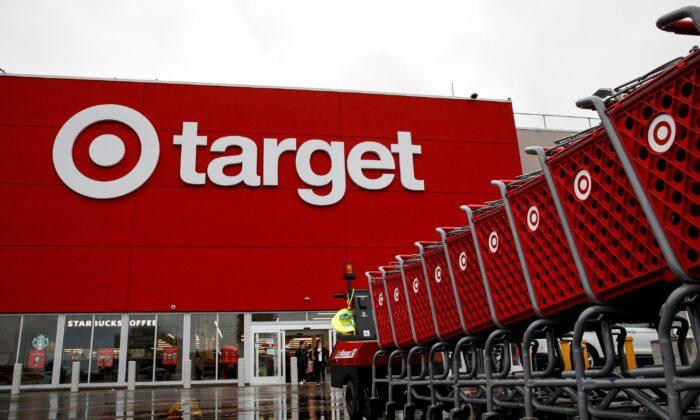A TikTok video that went viral over the weekend has allegedly exposed how items marketed as “Black Friday deals” at a Target retail store were being priced the same as their regular sale prices.
In the video posted by DeJay Downey on Sunday, the TikTok user pulls out the Black Friday sale cards from the sign holder, revealing the original sale price tags displayed underneath that are exactly the same.
The shopper checks the pricing of three televisions and discovered that they remained unchanged from the non-Black Friday deals.
“It’s the same. I don’t get it. I’m confused,” she said in the video.
The video has garnered over 3.4 million likes and 61,000 comments at the time of writing. A commenter who claimed to have worked at Target from 2015 to 2020 said that “things are on sale a month before Black Friday.”
Another commenter wrote that Target marked up the price of a purse during Black Friday sales. “I got my mom a Coach purse for Christmas last week for $145. They marked it up to almost $200 for Black Friday.”
Target’s Response
Target has responded to the matter. A Target representative said in a statement to TMZ on Nov. 27 that the televisions in the video “were on sale before Black Friday as part of our early Black Friday sales.”“We continued to offer those items at the same discount during Black Friday, but updated the signage to reflect the extended timing,” the representative explained.
The company stated that in both instances, customers would have saved “between $20–80 depending on which TV they purchased.”
“Those discounted prices compared to the regular prices are clearly shown in both sale signs in the video.
“We know our guests are looking for flexibility when they shop holiday deals, which is why we began Black Friday deals in late October and will continue offering great discounts throughout the holiday season,” it added.

Consumers are under pressure as their savings dwindle and their credit card debt grows. Inflation has eased, but many goods and services like meat and rent are still far higher than they were three years ago.
The National Retail Federation, the nation’s largest retail trade group, expects shoppers will spend more this year than last year, but their pace will slow.
The group has forecast that U.S. holiday sales will rise 3–4 percent for November through December, compared with 5.4 percent growth a year ago.
The forecast is consistent with the average annual holiday increase of 3.6 percent from 2010 to pre-pandemic 2019. Americans ramped up spending during the pandemic, with money in their pockets from federal relief checks and nowhere to go during lockdowns.
Analysts consider the five-day Black Friday weekend—which includes the Monday after the holiday known as Cyber Monday—a key barometer of shoppers’ willingness to spend.
This year, “it has been slow,” Gabriella Santaniello, founder of A Line Partners, an independent retail research firm in Los Angeles, California, told the Associated Press. “They’re getting out to shop. But I don’t think they’re buying as much.”
Worker unrest and protests over the Israel-Hamas war clouded the shopping experience in some parts of the world. Pro-Palestinian activists staged Black Friday protests Los Angeles and Washington. In Europe, the UNI Global Union said it organized “Make Amazon Pay” strikes and protests in 30 countries. Amazon said the strikes would not affect customers.







